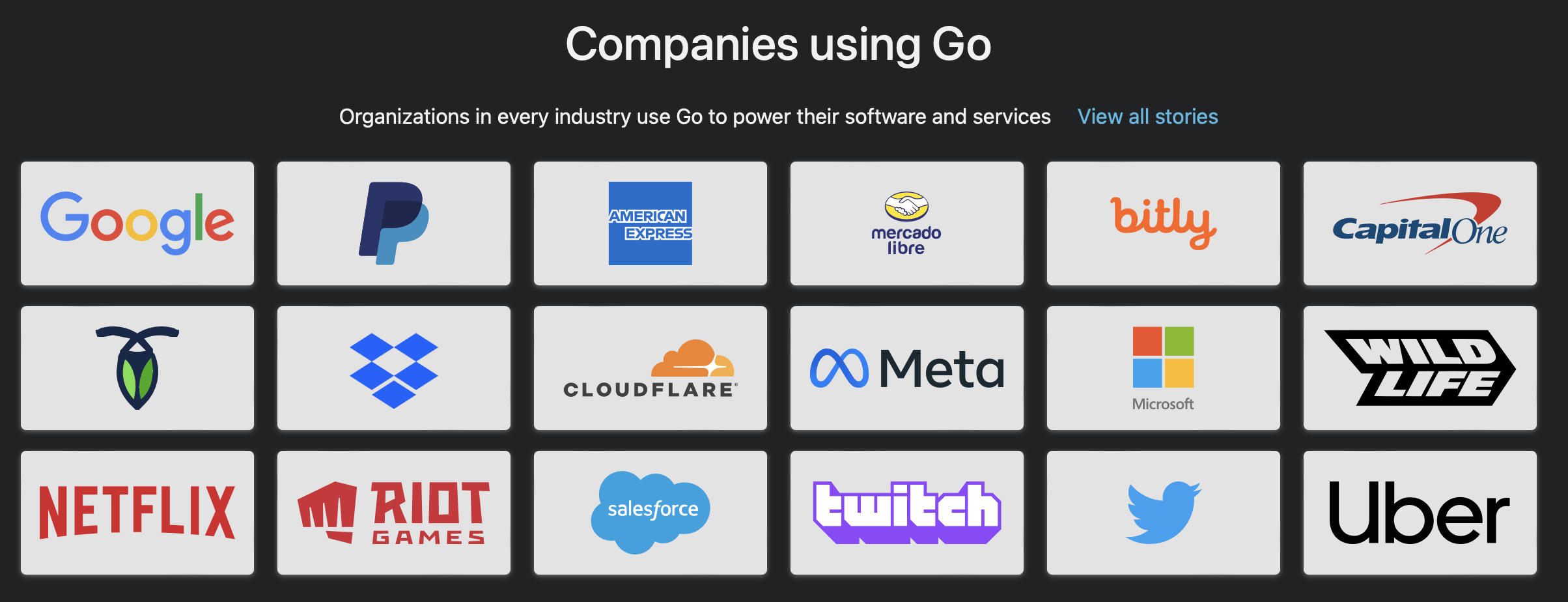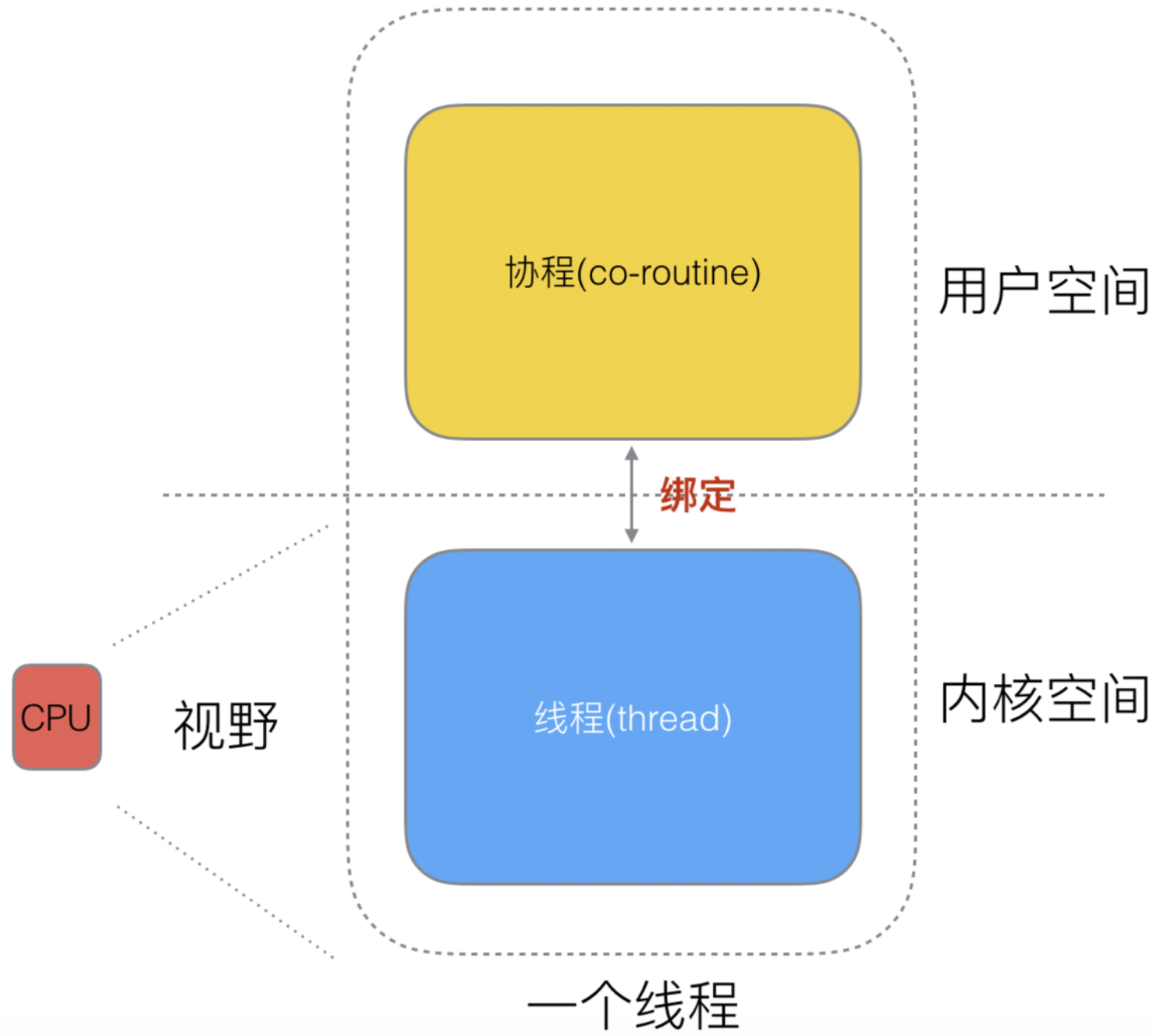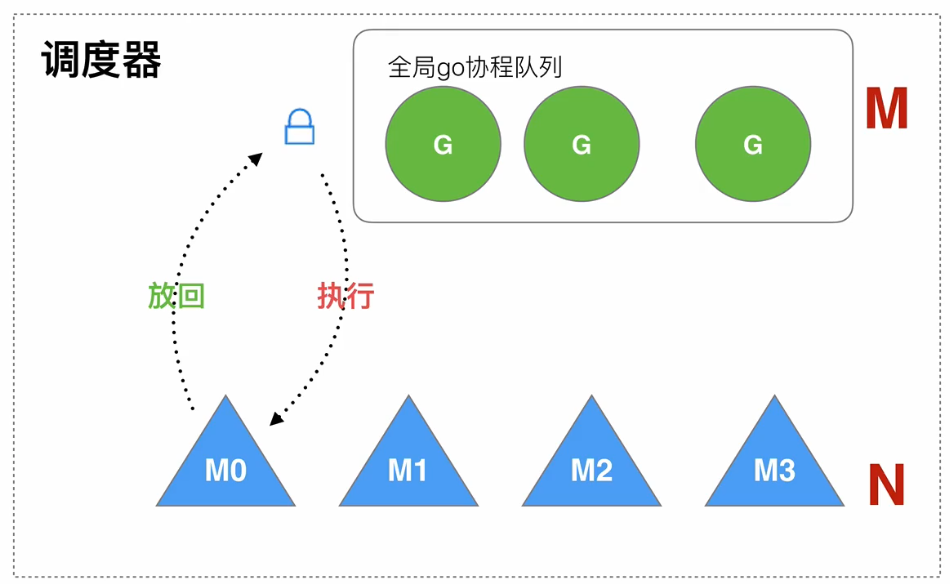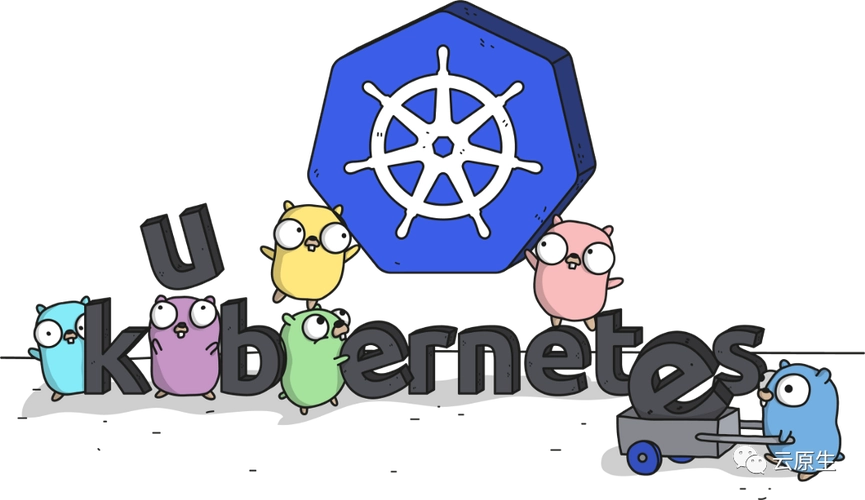Table of contents
This article takes an in-depth look at many key aspects of the Go language, from its concise syntax, powerful concurrency support to outstanding performance advantages, and further analyzes Go's significant applications in the cloud native field and its extensive cross-platform support. The article has a rigorous structure and analyzes the important position that the Go language occupies in modern software development and the technical principles behind it one by one.
Follow TechLeadCloud to share full-dimensional knowledge of Internet architecture and cloud service technology. The author has 10+ years of Internet service architecture, AI product development experience, and team management experience. He holds a master's degree from Tongji University in Fudan University, a member of Fudan Robot Intelligence Laboratory, a senior architect certified by Alibaba Cloud, a project management professional, and research and development of AI products with revenue of hundreds of millions. principal.

I. Introduction
Go’s history

The Go language (often referred to as Go or Golang) was designed by Robert Griesemer, Rob Pike, and Ken Thompson in 2007 and officially released to the public in 2009. These three designers all worked at Bell Labs and have extensive experience in programming languages and operating systems. Go was originally born to solve Google's internal software engineering problems, especially the development of server-side software.
The main goals in designing Go include:
- Simplifying modern software complexity
- Improve development and compilation speed
- Natural support for concurrency and network programming
- Portability and cross-platform support
critical time node


- 2009 : The Go language is released to the public for the first time.
- 2011 : Go version 1 (Go1) is released, establishing the API and main specifications.
- 2015 : Open source projects such as Docker and Kubernetes begin to widely adopt Go, accelerating its popularity in industry.
scenes to be used

Go language is widely used in the following scenarios:
- Backend Development : High-Performance APIs and Microservices
- Cloud-native applications : such as Docker and Kubernetes
- Network programming : TCP/HTTP server, network proxy, etc.
- Data processing and analysis : log analysis, data capture, etc.
- Command line tools : such as Git operation tools, system monitoring tools, etc.
- Embedded Systems and IoT
Go’s language status
Judging from the RedMonk programming language rankings and Stack Overflow developer survey , Go has always been in the top ten. It is particularly noteworthy that Go has become an indispensable language in the fields of server-side development and cloud native.
Technical community and enterprise support
Go has an active community and strong enterprise support. Not only Google, but also many large enterprises such as IBM, Microsoft, and Dropbox use Go extensively internally. Go also has a wealth of third-party libraries and frameworks, providing developers with powerful tools and resources.
Resource investment and ecosystem
Go has a large and rapidly growing ecosystem, including rich libraries, development tools, and mature frameworks. This makes Go more than just a programming language, but a comprehensive toolset for solving problems and achieving goals.
2. Concise grammatical structure
The Go language is designed to be concise, clear, and maintainable. The concise syntax not only makes it easy for novices to get started, but also allows development teams to conduct large-scale development more efficiently.
basic elements
The basic elements of the Go language include variables, constants, functions, and control structures, but compared with other languages, Go has its own unique concise style.
Variable declaration and initialization
The Go language provides a variety of concise ways to declare and initialize variables.
// 常见的变量声明与初始化
var i int = 10
var j = 20
k := 30
code example
// 声明并初始化多个变量
var a, b, c = 1, 2.0, "three"
x, y, z := 4, 5.0, "six"
type inference
The Go compiler performs powerful type inference, which avoids redundant type declarations.
var message = "Hello, World!" // 类型推断为string
count := 42 // 类型推断为int
Functions and return values
Go's functions can return multiple values and support named return values.
// 函数返回多个值
func swap(x, y string) (string, string) {
return y, x
}
code example
// 带命名返回值的函数
func divide(dividend, divisor int) (quotient, remainder int) {
quotient = dividend / divisor
remainder = dividend % divisor
return
}
output
Using this dividefunction, for example divide(5, 2)will return (2, 1).
Interfaces and Structures: Composition rather than Inheritance
Go provides a powerful abstraction mechanism through structures (Structs) and interfaces (Interfaces), but it avoids complex inheritance structures like Java.
type Shape interface {
Area() float64
}
type Circle struct {
Radius float64
}
func (c Circle) Area() float64 {
return 3.14159 * c.Radius * c.Radius
}
Here, Circlethe struct implements Shapethe interface without explicitly declaring it. This implicit interface implementation reduces the amount of code and improves code readability and maintainability.
Error handling: explicit instead of exceptions
Go handles errors by returning values instead of using exceptions. This makes the error handling path of the code clearer and easier to understand.
if err != nil {
// handle error
}
summary
The Go language greatly reduces the complexity of programming through its concise and consistent syntax structure. Not only that, it also provides a high degree of expressiveness through mechanisms such as type inference, multiple return values, interfaces, and error handling.
3. Concurrency support
The Go language provides first-class support for concurrent programming, which is one of its most significant differences from other programming languages. Go uses Goroutines and Channels to simplify concurrent programming and provide abstractions for low-level concurrency control through its runtime system.

Goroutines: lightweight threads

Goroutines are the core of the Go language concurrency model. They are more lightweight than operating system threads because they share the same address space.
Basic usage
go funcName(params)
Simply prepend gothe keyword before the function call and you create a new Goroutine.
code example
// 使用goroutine执行异步任务
func printNumbers() {
for i := 0; i < 10; i++ {
fmt.Println(i)
}
}
func main() {
go printNumbers()
// do something else
}
output
Because printNumbersit is running in a new Goroutine, the main function mainwill be executed in parallel with it.
Channels: Concurrent and safe data exchange
Channel is the main means in Go for data transmission and synchronization between Goroutines.
Basic usage
ch := make(chan int)
code example
// 使用channel进行数据传输
func sum(a []int, ch chan int) {
sum := 0
for _, v := range a {
sum += v
}
ch <- sum // send sum to ch
}
func main() {
a := []int{
7, 2, 8, -9, 4, 0}
ch := make(chan int)
go sum(a[:len(a)/2], ch)
go sum(a[len(a)/2:], ch)
x, y := <-ch, <-ch // receive from ch
fmt.Println(x + y)
}
output
The output of this program is athe sum of all elements in the slice.
Select: multiplexing
Go provides selectstatements, which are a powerful multiplexer for multiple Channel operations.
select {
case msg1 := <-ch1:
fmt.Println("Received", msg1)
case msg2 := <-ch2:
fmt.Println("Received", msg2)
case ch3 <- 3:
fmt.Println("Sent 3 to ch3")
default:
fmt.Println("No communication")
}
This allows you to wait for multiple Channel operations at the same time and only execute the one that is ready.
Memory model and synchronization primitives
Go also provides traditional synchronization primitives, such as mutex locks ( Mutex) and read-write locks ( RWMutex), but in actual development, it is recommended to use Channels for concurrency control.
summary
Go's concurrency model mainly revolves around Goroutines and Channels, which together provide an efficient, powerful and safe way to perform concurrent programming. By having a deep understanding of the Go language's concurrency model, developers can build highly concurrent systems without getting bogged down in complex and error-prone concurrency control. This is also an important reason why the Go language is increasingly popular in modern multi-core and distributed systems.
4. Performance advantages
The Go language not only has advantages in syntax and concurrency model, but its performance is also a highly praised feature. This chapter will delve into the performance features and advantages of the Go language.
efficient compiler
Go's compiler is designed for fast compilation speed, which means you can go from source code to executable faster.
Code Example: Compilation Time
time go build your_program.go
By running this command, you will find that the Go compiler is generally much faster than other programming languages.
Runtime performance
The Go runtime is extremely efficient, mainly due to its lightweight Goroutine and garbage collection mechanism.
Goroutine scheduling
The Go runtime has its own scheduler, which can schedule Goroutines at the user level and reduce the cost of context switching.
// 计算斐波那契数列
func Fibonacci(n int) int {
if n < 2 {
return n
}
return Fibonacci(n-1) + Fibonacci(n-2)
}
Thanks to Go's runtime scheduling, such CPU-intensive tasks can be easily executed concurrently.
Garbage collection and memory management
Go uses a concurrent garbage collection algorithm, which greatly reduces the performance impact of garbage collection.
Code Example: Memory Allocation
// 创建一个结构体实例
type Data struct {
X int
Y float64
Text string
}
instance := &Data{
X: 1,
Y: 3.14,
Text: "Text",
}
Due to Go's efficient memory management, such operations are often faster than in other languages.
Built-in performance analysis tools
Go provides a series of performance analysis tools, such as Go pprof, that allow developers to gain insights into the performance bottlenecks of their code.
import _ "net/http/pprof"
Add this line and you can perform real-time performance analysis through the web interface.
summary
Go language has excellent performance in compilation speed, runtime performance and memory management, which makes it very suitable for application scenarios that require high performance, such as microservices, concurrent processing, data processing, etc. By understanding the performance advantages of the Go language, developers can better take advantage of these advantages to build efficient and scalable systems. This is one of the reasons why many projects and companies with high performance requirements choose Go as their development language.
5. Ecosystem and Community

In addition to language features and performance advantages, the success of a programming language is also highly dependent on the activity of its ecosystem and community. Go has considerable advantages in this regard. This section will delve into Go's ecosystem and community.
Package management and modularity
The Go language has package management and code reuse in mind from the beginning. Go's package management tools go getand Go Modules provide developers with an efficient and intuitive way to manage dependencies.
Go Modules
Go Modules are introduced in Go version 1.11 and are the official solution for dependency management.
go mod init
go get github.com/pkg/errors
With simple commands, developers can initialize a new project and add dependencies.
standard library
Go's standard library covers many fields such as network programming, data parsing, text processing, etc., greatly reducing the need for developers to rely on third-party libraries.
Code Example: HTTP Server
// 创建一个简单的HTTP服务器
package main
import (
"fmt"
"net/http"
)
func hello(w http.ResponseWriter, req *http.Request) {
fmt.Fprintf(w, "Hello, world!\n")
}
func main() {
http.HandleFunc("/hello", hello)
http.ListenAndServe(":8080", nil)
}
This example shows how to net/httpcreate an HTTP server using packages from the Go standard library.
Open source ecosystem
Go has a large open source community, and there are a large number of high-quality Go projects on GitHub, such as Kubernetes, Etcd, and Terraform.
Communities and meetings
The Go community is active, with multiple forums, online chat rooms, and international and local conferences, such as GopherCon.
GopherCon
GopherCon is an annual gathering of Go developers, bringing together Go users from around the world to discuss the best practices and future development of Go.
summary
Go's ecosystem consists of high-quality package management tools, comprehensive standard libraries, active open source communities, and rich learning resources. All this provides developers with good support and helps promote the rapid development and widespread application of the Go language. Ecosystem and community are important criteria for measuring the health of a programming language. Go's performance in this regard proves that it is not only a potential new language, but also a mature, reliable programming platform with broad application prospects. .
6. Application of Go in the cloud native field

The rapid development of the cloud native field has also led to the widespread application of the Go language. As one of the main forces in cloud native technology, Go has gradually become the language of choice in this field due to its high performance, concise syntax, and rich standard library. This section will delve into the key role and advantages of Go in cloud native application development.
Containerization and microservices
The efficient compilation and lightweight runtime environment of Go language make it very suitable for building containerized applications and microservices.
Code example: Dockerfile
# 使用Go官方基础镜像
FROM golang:1.16
# 设置工作目录
WORKDIR /app
# 将Go模块复制到容器中
COPY go.mod ./
COPY go.sum ./
# 下载所有依赖
RUN go mod download
# 将源代码复制到容器中
COPY . .
# 编译应用
RUN go build -o main .
# 运行应用
CMD ["/app/main"]
This simple Dockerfile example shows how to containerize a Go application.
Kubernetes and cloud native orchestration
Kubernetes is a container orchestration platform designed and open sourced by Google. Its bottom layer is mainly written in Go language.
Code example: Kubernetes Client-Go
import (
"k8s.io/client-go/kubernetes"
"k8s.io/client-go/tools/clientcmd"
)
// 初始化Kubernetes客户端
config, err := clientcmd.BuildConfigFromFlags("", "/path/to/kubeconfig")
clientset, err := kubernetes.NewForConfig(config)
This code shows how to use Kubernetes’ Go client library for cluster operations.
Go application in service mesh
Mainstream service mesh projects such as Istio and Linkerd are also implemented in Go and provide sophisticated traffic management, security and observability capabilities.
Code Example: Flow Control with Istio
apiVersion: networking.istio.io/v1alpha3
kind: VirtualService
metadata:
name: reviews
spec:
hosts:
- reviews
http:
- route:
- destination:
host: reviews
subset: v1
Although this is not Go code, Istio's YAML configuration files control the behavior of service meshes written in Go.
Serverless and FaaS
Go has also achieved considerable success in the fields of Serverless and FaaS (Function as a Service). Platforms such as AWS Lambda and Google Cloud Functions all provide first-class support for Go.
summary
Go language has occupied a place in the field of cloud native application development due to its excellent performance and scalability. From container orchestration to service mesh to serverless architecture, Go has a wide range of application scenarios. The wide application of Go in the cloud native field not only proves its capabilities as a modern programming language, but also highlights its superiority in handling complex scenarios such as high concurrency, distribution, and microservice architecture. Therefore, for those who want to have a deeper understanding of cloud native application development, learning and mastering Go has almost become a necessity.
7. Portability and cross-platform support
The Go language has emphasized cross-platform support and high portability from the beginning of its design, which is also an important reason why it has gradually become popular among developers. This section will analyze in detail the technical advantages and application scenarios of Go in this area.
Cross-platform features of the compiler
Go's compiler (gc) supports a variety of operating systems and architectures. Through simple environment variables or command line parameters, you can easily generate executable files for different platforms.
Cross-platform compilation
# 为Linux平台编译
GOOS=linux GOARCH=amd64 go build -o app-linux
# 为Windows平台编译
GOOS=windows GOARCH=amd64 go build -o app-windows.exe
The above code shows how to use Go's cross-compilation feature to generate executable files for Linux and Windows platforms respectively.
Cross-platform support for the standard library
Go's standard library provides a unified set of APIs for file operations, network programming, etc., shielding differences in the underlying operating systems.
Code Example: File Operations
// 使用Go标准库进行文件操作
package main
import (
"io/ioutil"
"log"
)
func main() {
data := []byte("Hello, world!\n")
// 写入文件
err := ioutil.WriteFile("/tmp/hello.txt", data, 0644)
if err != nil {
log.Fatal(err)
}
}
This code example shows how to use ioutilpackages for file operations that are valid on both Unix and Windows platforms.
Small size and few dependencies
Since Go applications are compiled into a single executable file and require no external dependencies, this greatly simplifies deployment in different environments.
C language interaction
Through the cgo tool, Go can easily interact with the C language library, which greatly enhances its portability.
Code example: cgo
// #include <stdio.h>
import "C"
func main() {
C.puts(C.CString("Hello, world!"))
}
The above code example shows how to use cgo to call a C language putsfunction.
summary
Go demonstrates strong portability and cross-platform support through its excellent cross-platform compiler, rich standard library, and high interoperability with the C language. In today's diverse and global software development environment, portability and cross-platform support are one of the key factors for the success of any programming language. Go's performance in this regard makes it a programming tool worth investing in and using.
8. Summary
Go language, since its launch by Google in 2009, has quickly emerged due to its concise syntax, excellent performance and high portability. It provides first-class support for concurrent programming and has a rich and powerful standard library. Go has become an indispensable programming tool in many cutting-edge fields such as cloud native, microservices, and data analysis. Its ecosystem is becoming increasingly complete, with a large number of open source projects and active communities. To sum up, whether you want to build high-performance server-side applications or seek an efficient and reliable general-purpose programming language, Go is a choice worth learning and using in depth.

Follow TechLeadCloud to share full-dimensional knowledge of Internet architecture and cloud service technology. The author has 10+ years of Internet service architecture, AI product development experience, and team management experience. He holds a master's degree from Tongji University in Fudan University, a member of Fudan Robot Intelligence Laboratory, a senior architect certified by Alibaba Cloud, a project management professional, and research and development of AI products with revenue of hundreds of millions. principal.